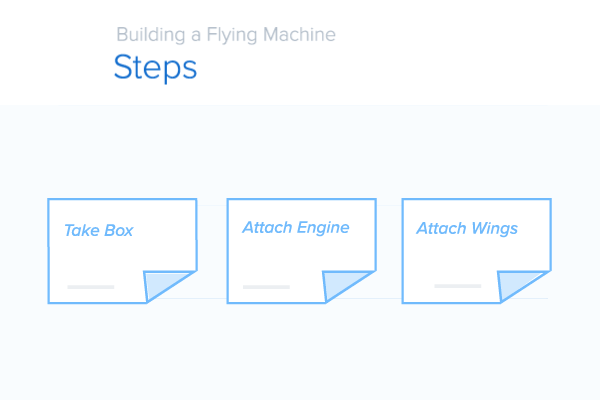Home > Blog > Create Agile Story Maps that Unlock Awesome Products
Create Agile Story Maps that Unlock Awesome Products

As the end of 2016 sneaks up on us, it is virtually impossible to talk about agile project management methodologies without referring to story mapping techniques. And rightfully so – user story mapping has become one of the cornerstones of agile product development and it is hard to imagine modern product management without it.
Why Do We Need Story Maps?
Story maps are essentially a method of laying out your initial specs for the product, by way of a story. While verbalizing and thinking your product’s story out loud, you give it form and substance, challenge its validity over and over, identify problems, scrutinize the process and fill in the missing pieces.
Much of the story map’s success depends on the owner’s creativity and ability to run with her/his associative logic. This is a fragile process that leans heavily on one’s concentration, so it warrants delicate handling. We’ll get to that later.
The traditional way to story map is with stick-its, but I find it too confusing and after the second time I realized I lost my hands and feet in an office covered wall to wall with stick-its, I started looking for free story mapping software. It became easier once we launched Craft and are now able to streamline the discovery process, prioritization, workbench and backlog all in the same platform.

What Do We Get Out of the Story Mapping Process?
The story mapping technique is considered a “softer” way of product specing (as opposed to user interviews and data-based research) when in fact, it is much more comprehensive in terms of identifying user behavior patterns and spotting challenges. In other words – it is a more holistic approach to product development.
Another point in favor of agile story mapping – it is easy to manage in the fast-paced, rhythmic agile environment. When you work in two-week sprints, it is practically impossible to aggregate data at the proper pace.
I put together a short list of takeaway benefits I like to call “Story Mapping Saves Lives”, but it comes with reading instructions: scan it now, and return to read it in-depth after you learn how to create a story map:
- Keep your finger on the pulse – make sure you are designing and developing a relevant product
- Save development time – catch all the design issues before the project reaches development stage
- Polish ideas – define which problems you want to solve, what you want to improve and preserve
- Best team brainstorming – keeps the conversation open, flowing, dynamic and fruitful
- Better understanding of the idea – teams that are highly engaged in ideation and discovery have a more profound understanding of the concept
- Shared sense of ownership – when your team is part of the discovery and product building, they are more loyal to it. Simple fact.
- Identify holes in the plot – the visual methodology makes it easier to see the whole picture and see what you missed
- Prioritize smartly – also a virtue of the visual technique: it’s easier to see what is more important to the users
The Making of a Story Map
Each agile user story map is composed of 5 stages, carefully yet intuitively structured. None of it is particularly complicated, but attention to details is of the utmost importance. A winning tip for successful agile story mapping: try to pace your progress and see every stage through to its very end, because every stage is constructed largely on the previous one and we need a stable base to build our product upon.
Verbalize Activities
To put it simply: tell your story. Sketch a high-level overview of your story. Before you go into details, you need an outline of the thing you want to build. This is an excellent exercise for agile product managers in planning with the big picture in mind.
Break it down to Steps
Start building the story step by step. Simulate the user’s journey through the product, corresponding with their needs and pains. These are the stepping stones of your product, so to speak. It is important to break down the user journey to as many steps as possible – the deeper you drill down, the richer your picture becomes, making sure you don’t skip any critical stages or give yourself a pass on any challenging elements.

Cultivate the Stories
Start pouring life into the steps. Broaden your vision to include details and put flesh on the bones. You will notice this is where you start scrutinizing your product on an insane detail level. I can’t stress this enough – more details are better. This is where the plot thickens: you may start to find different use cases for different details and elements.
Prioritize Elements
Remember back in #3, when you piled heaps of details, use cases and usage elements? Prioritization is when you get to decide what matters, what matters less and what should be scrapped. Prioritize elements according to relevance and user needs. Note that this isn’t product prioritization yet, but a more intuitive “taking stock” measure.
Introduce Personas to the Mix
Create personas and apply them to the stories. This can create derivatives and help further find holes. Notice that in some cases, the steps vary so much for the new persona, that it spins off a whole new story. I know some product managers who create a whole new story map, to correlate with the new persona’s journey. Personally, I find this is good point to stop, take a step back and decide whether or not this new persona’s needs are in the scope of my target audience.

Screenshot from Craft’s Story Mapping module
Agile Story Mapping Methodologies to Live and Die By
Remember we talked about how fragile the process of mapping out the story is? Our product owner and storyteller’s process of thought depends fiercely on her/his ability to complete a line of thought and glide into the next one, uninterrupted. This is how we make sure that happens:
- The product/feature owner tells the story and someone else should document it – this gives the owner the opportunity to focus on thinking and developing her/his ideas. You’d be surprised how consuming and interruptive jotting down notes can be.
- No interruptions while the person is streaming their product story – seriously, no interruptions. Think of the thought process like a snowball, if you’ll pardon the cliché – the more traction it gains, the larger it grows. If you stop it every few meters, you’ll end up with a puddle of ice water at the bottom of a 3 mile slope.
- Questions – yes please! When the time is right – a lot of questions come up while the story unfolds, but they need to wait until the storytelling is over. If you’re worried the momentum will vanish – I promise you, if your question is challenging and relevant, it will still be important even at the end. That said – questioning and challenging the story map is critical for identifying potholes and plot holes. The best practice is to right them down and ask at the end.
The 5 W’s of Story Mapping Goals
When all’s said and done, it’s quite difficult to stay focused on the big picture with so many details clogging the view. Difficult, but crucial. Over time, I devised a series of questions, which I make sure to stop every now and again during the story mapping process, and ask myself, just to make sure I’m still on track. I call them “The W’s”:
- Which problem are we solving? What is the pain we are dealing with?
- Whose problems are we solving? Our user base and target audience.
- What is the competition doing? Get references and inspirational material, find out what is being done in your field and what the trends are.
- Who are our users? Your personas are a representation of your users.
- Where are we going? Your story map is the answer to that question – when you integrate the answers for all the previous guidelines, where do you want to end up?
The Product Manager as a Storyteller
Agile story mapping techniques and tools are a rising field. My instinct tells me we are going to get so much more out of them in the coming years and story maps will develop into an even more central tool in agile product discovery.
Above all, it brings out the human aspects of product usage and user needs. A good story map demands that the product manager be a storyteller, telling a structured but evolving story of a user’s journey down the product path. It’s demanding, stimulating and fun as hell if you dive in and immerse yourself in the product story. Get free example of user story at Craft templates library


